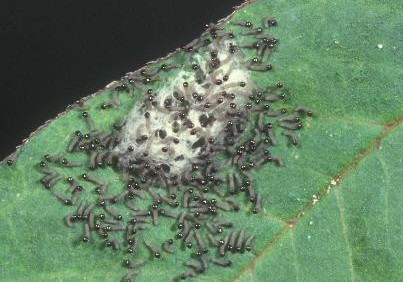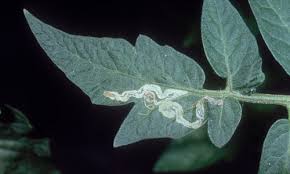Do you sometimes feel like you’re fighting a losing battle against garden pests? What are these critters? Why do they show up in my garden, and what should I do about them? Why does spraying chemicals often make the problem worse? Integrated Pest Management (IPM) is an environmentally sensitive approach to controlling pests – or as I say, “Growing the best plants while doing the least harm.” IPM is the method of choice taught by universities for both commercial and home gardening. It consists of a few simple steps to manage any pests you might find on your plants, as well as good practices for keeping pests out in the first place. In this blog post, we’ll look at what to do when you have a pest problem.
The first step is to know when you have a pest munching on your plants. This is my favorite part of IPM, because it gives me an excuse to go out and enjoy my garden! Go out and look at your plants. Are there yellow leaves, holes, wilting — or anything that just doesn’t look right? Turn some leaves over – insects often hide on the underside. See if there are webs, spots, or critters. This is called “scouting”, and a couple of tools can help – a hand lens to get a good look at any questionable spots, an extending mirror to see under thick plants, and plastic baggies to collect samples to be identified. How often you scout depends on the kinds of plants you grow – vegetables and tender flowers can fall quickly to insects and disease, so check them every few days. Trees and landscape plants are sturdier, so they don’t need to be checked as often.


Next, we need to identify the pest. Why? Because not all solutions work for every insect – we need to know what we’re dealing with. It may be a beneficial insect, or not an insect at all – many disease and nutrient problems can mimic insect damage. Google “________(insert plant name here) problems EDIS” to get pictures of common problems to give you a starting point in identification. (Including “EDIS” will prioritize results from UF research, giving you Florida-specific answers.) Or bring a sample in to the county UF/IFAS Extension Plant Clinic – that’s what they are for!

Next, learn something about the pest. What is its life cycle? Is it actually harming the plant? If it is a disease, does it flourish in heat and humidity, or colder weather? Knowing something about it will help you determine how to fight it.

Step four is to decide if action is needed. Leafminers make unsightly tunnels in my tomato leaves, but they don’t actually hurt the plant. I don’t bother trying to control them. Many fungal diseases flourish in the hot, humid months, but if the plant is a fig or a sycamore that loses its leaves in the fall, there’s no point in spraying fungicide in September. Let the leaves drop, clean them up to remove the fungal spores, and the new spring growth will be healthy.

If you decide action is needed, step five is to look at your options and choose the least harmful. Suppose you have aphids covering your hibiscus. There are many chemicals that will kill aphids, but they may also harm pollinators or beneficial insects. A soap spray can work, but in hot weather may burn your plant’s leaves. How about trying to rinse the aphids off with a strong blast of water? Repeat every few days for a week or two in order to ensure you knock the newly hatched ones off, until all the eggs are gone. This usually takes care of aphids, and waters your plant, too!

Step six is simply to check back and make sure whatever control method you used worked. Many insects are resistant to the common chemicals on the market – another reason to try less harmful methods first! If the pest is still there, try something else. Again, you can always give us a call at the county UF/IFAS Extension Plant Clinic for advice. We love to help!
So those are the six simple steps to growing better plants while doing the least harm. You can learn more at https://cals.arizona.edu/extension/ornamentalhort/plantprotect/ipm_%20homegarden.pdf. There are also lots of effective, scientifically sound ways to ensure pests don’t become a problem in the first place. We’ll explore those in the next blog post. Until then, happy scouting!
This blog post was written by UF/IFAS Extension Orange County Master Gardener Volunteer, Mary Ann Pigora, Class of 2017. The UF/IFAS Extension Orange County Master Gardener Volunteers play a crucial role in the outreach of UF/IFAS Extension.
 0
0
